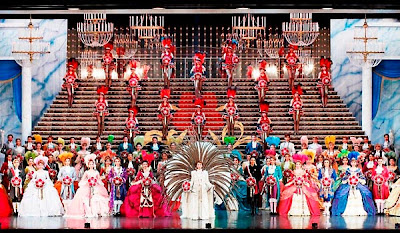My new favorite Korean food: Jjimdalk
 |
| Andong Jjimdalk, a thing of great joy and beauty |
For me one the best things about life in Korea is the food. In general it's much healthier than western food, with lots of vegetables, fish, fermented things like kimchi that are great for naturally stimulating the growth of pro-biotics and uses a lot less salt. The one downside is the spiciness - although I enjoy spicy foods, my heartburn does not. Also, compared with Japan, the portion sizes are generally bigger in Korea. But at least in Korea there is somewhat better variety with rice, so you're not always served the same starched, nutrition-less white rice that is so common in Japan.
After a year in Korea trying as many new dishes as I could, one emerged as my definite favorite: Andong Jjimdalk.
The name Jjimdalk breaks down into two parts: "jjim" meaning steamed or boiled and "dalk" (also spelled "dak") meaning chicken. It consists of chicken that has been steamed, then slow cooked with vegetables and Korean vermicelli noodles in a soy sauce based sauce.
I read the Wikipedia description of the origins of Jjimdalk and it's kind of funny: it may either have originated during the Joseon period or the 1980's (just a bit of a time leap there.) It seems like the truth is that some form of it was invented during the Joseon period, but the modern version of Jjimdalk really came together more recently. It comes from the city of Andong, near the Hahoe Folk Village that I wrote about in my last post.
Last year I was involved in a few community programs that provided Korean classes for foreigners. One was the free class offered by Pohang City Hall and the other was a series of conversation practice classes and cultural events provided by a local foreigner church, called the Pohang International Community Church (PICC). Although I'm not a member of the church, I attended a lot of the language classes and events and really enjoyed all of them. Pastor Rich and his wife were very welcoming of everyone, regardless of their religious background. Their events are a great way to improve your Korean or learn more about Korean culture if you live in Pohang.
 |
| Role-playing a dinner at a Korean family's house during our conversation class at PICC |
Rich was interested in hosting more cultural events so I suggested a class on cooking Jjimdalk. Some other people were interested, so Rich invited a friend to come teach us and a bunch of Korean families came out to share the food with us.
Here are the basics for making Jjimdalk. For a more complete recipe, go here.
You start by boiling large chunks of chicken on the bone. For many dishes, Koreans like things to be cut up into big chunks, and this is the case with Jjimdalk. The chicken is boiled with onions, garlic, ginger and a Korean pepper called "cheongyang gochu" (청양고추).
 |
| Boiled chicken is added to the pan with sauce and onion, garlic and ginger |
While this is boiling, the vermicelli noodles, called "dangmyeon" (당면), should be soaking. These are the same noodles used in the popular dish "japchae". They're made from sweet potato and when cooked they have a golden brown, slightly clear color.
 |
| Dangmyeon soaking (when uncooked, they're a light gray color) |
Next you put the boiled chicken, onions, garlic, etc. into a large pan (something like a wok would probably be best). You begin to make the sauce now and simmer everything. This is where you'll find a lot of variation in recipes, as different cooks will have their own ideas of what to put in the sauce. The sauce we made in our class had a lot of ingredients, including Korean soy sauce, mirin (a type of rice wine used mainly in Japanese cooking, but also in Korea), oyster sauce, mulyeot (물엿) a kind of syrup, sugar and pepper.
 |
| Our teacher showing us what to add to the sauce |
Next, potatoes and carrots were added, and in our class, sweet potatoes (this is the only time I've seen them in Jjimdalk, but they were a tasty addition). Again, everything is cut into large chunks. The pan was covered for a while, then bell peppers were added, and it was covered again.
 |
| Adding the carrots, potatoes, sweet potatoes and bell peppers |
Once this had cooked for awhile and the potatoes were nearly finished, onions were added, and it was covered again. The very last ingredients were the noodles and large pieces of green onion. After being covered for a few minutes, the dish was finally ready to eat.
 |
| Adding dangmyeon |
 |
| Stirring in the last ingredient, green onions |
It was amazing! As this isn't something I've normally seen served in Korean restaurants overseas, I highly recommend getting some friends together for dinner some time and trying the recipe. It may be a little difficult to get things like mirin, vermicelli noodles and cheongyang gochu (Korean chili pepper), but if you're lucky enough to have an Asian supermarket in your area, it is possible.
 |
| Ready to eat! |


Comments
Post a Comment